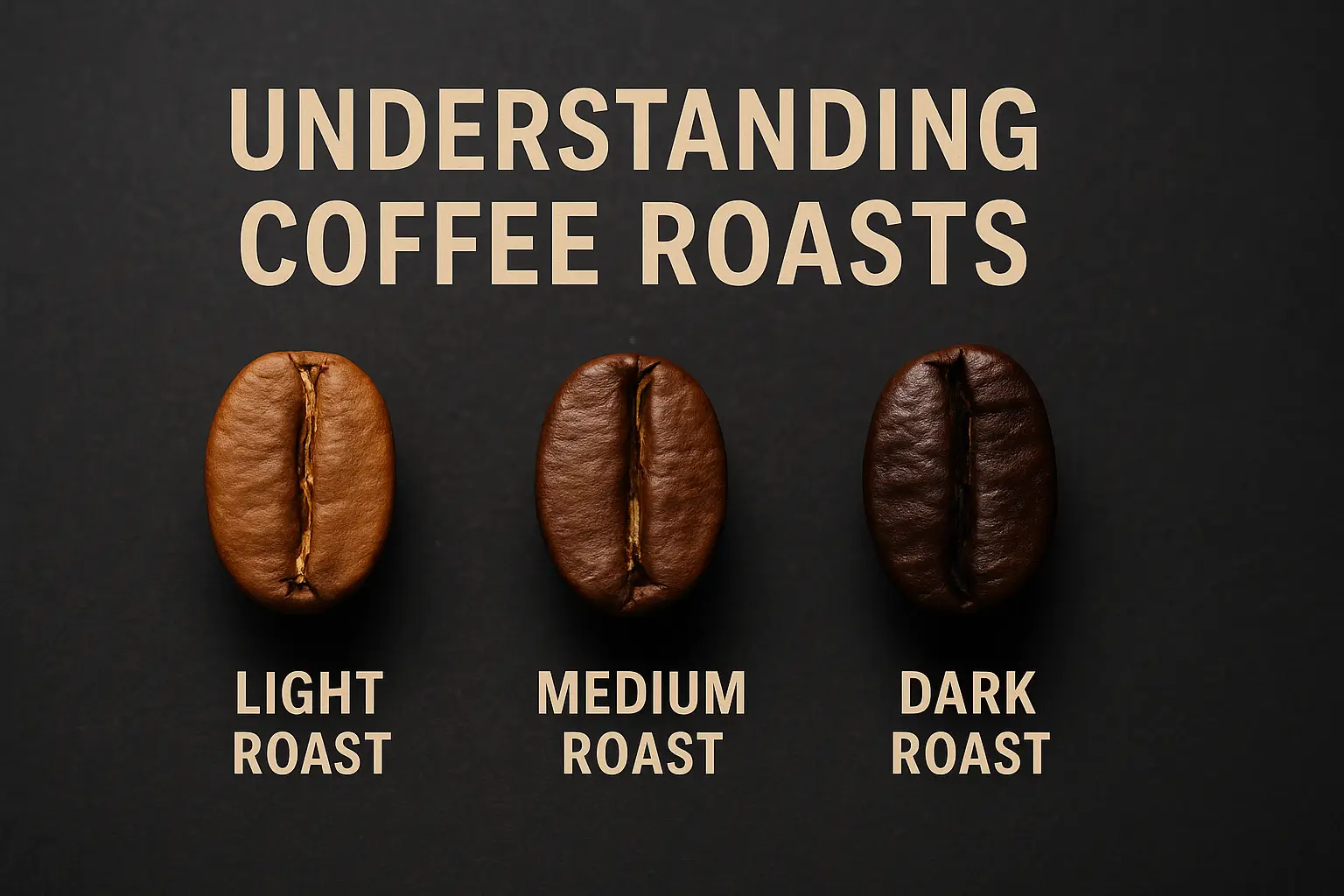Roasting is what transforms green coffee beans into the aromatic, flavorful coffee we know and love. But did you know that the roast level plays a major role in how your coffee tastes?
In this article, we’ll explore the differences between light, medium, and dark roasts, how roasting affects flavor, and how to choose the right roast based on your personal preferences.
What Is Coffee Roasting?
Coffee roasting is the process of heating green coffee beans to high temperatures (typically 180°C to 240°C / 356°F to 464°F) to bring out their flavor, aroma, and color. During roasting, chemical reactions occur — like the Maillard reaction and caramelization — that develop the complex flavors we associate with brewed coffee.
The longer and hotter the roast, the darker the bean becomes, and the more its original flavors are transformed by the roast profile.
Light Roast Coffee
Appearance:
- Light brown color
- Dry surface (no oil)
- Often labeled as: Cinnamon roast, New England roast, or Half City roast
Flavor Profile:
- Bright acidity
- Fruity or floral notes
- Light body
- Preserves the bean’s origin character (like terroir in wine)
Roast Characteristics:
- Internal temperature: ~196°C (385°F)
- Roasted just after the “first crack” (when beans pop audibly)
Best For:
- Pour-over, AeroPress, cold brew
- People who enjoy complex, tea-like, or citrusy flavors
Examples of Regions That Shine in Light Roast:
- Ethiopia
- Kenya
- Panama
Medium Roast Coffee
Appearance:
- Medium brown
- Still dry on the surface
- Often labeled as: City roast, Breakfast roast, or American roast
Flavor Profile:
- Balanced acidity and body
- Notes of chocolate, caramel, nuts
- Slight sweetness with a mellow, rounded taste
Roast Characteristics:
- Internal temperature: ~210°C (410°F)
- Roasted between the end of the first crack and before the second crack
Best For:
- Drip coffee, French press, and milk-based drinks
- Drinkers who want a smooth and classic coffee taste
Popular Origins:
- Colombia
- Brazil
- Guatemala
Dark Roast Coffee
Appearance:
- Dark brown to almost black
- Oily surface
- Often labeled as: French roast, Italian roast, Espresso roast, Vienna roast
Flavor Profile:
- Low acidity
- Bold, smoky, and bitter flavors
- Roasty notes like charcoal, dark chocolate, or burnt sugar
- Bean origin flavors are muted or lost
Roast Characteristics:
- Internal temperature: ~225°C to 240°C (437°F to 464°F)
- Roasted well past the “second crack”
Best For:
- Espresso, French press, and fans of strong coffee
- Those who add milk or sugar and want coffee that holds up
Common Origins:
- Indonesia (Sumatra, Java)
- Central and South America (used for base blends)
Roast Comparison Chart
| Roast Level | Color | Acidity | Flavor Profile | Bean Origin Noticeable? |
|---|---|---|---|---|
| Light | Light brown | High | Fruity, floral, tea-like | Yes |
| Medium | Medium brown | Balanced | Caramel, chocolate, nutty | Partially |
| Dark | Dark brown | Low | Bitter, smoky, bold, roasted | No (mostly roast-driven) |
How Roast Affects Caffeine
Contrary to popular belief, light roasts actually have slightly more caffeine by volume than dark roasts. That’s because:
- Light roasts are denser
- Dark roasts expand more, meaning fewer particles per scoop
However, the difference is minimal and won’t dramatically impact your energy levels.
How to Choose the Right Roast for You
- If you like fruit-forward, vibrant coffees → Light roast
- If you want a smooth, traditional flavor → Medium roast
- If you enjoy strong, bold, or intense coffee → Dark roast
Also consider your brewing method:
- Pour-over or Chemex: Light or medium roast
- Espresso or moka pot: Medium-dark to dark roast
- French press: Medium or dark roast
Roast Date Matters
Regardless of roast level, freshness is key. Look for beans roasted within the last 2 to 4 weeks. Store them in a sealed, opaque container away from light, heat, and moisture.
Avoid beans without a roast date — they’re likely stale.
Final Thoughts: Roast Is Personal
Roast level isn’t about right or wrong — it’s about what you like. Some people love the bright acidity of a light roast, while others crave the bittersweet punch of a French roast.
The best way to find your favorite? Taste across the spectrum, keep notes, and trust your palate.
Each roast unlocks a new way to experience coffee — so sip, savor, and explore!
